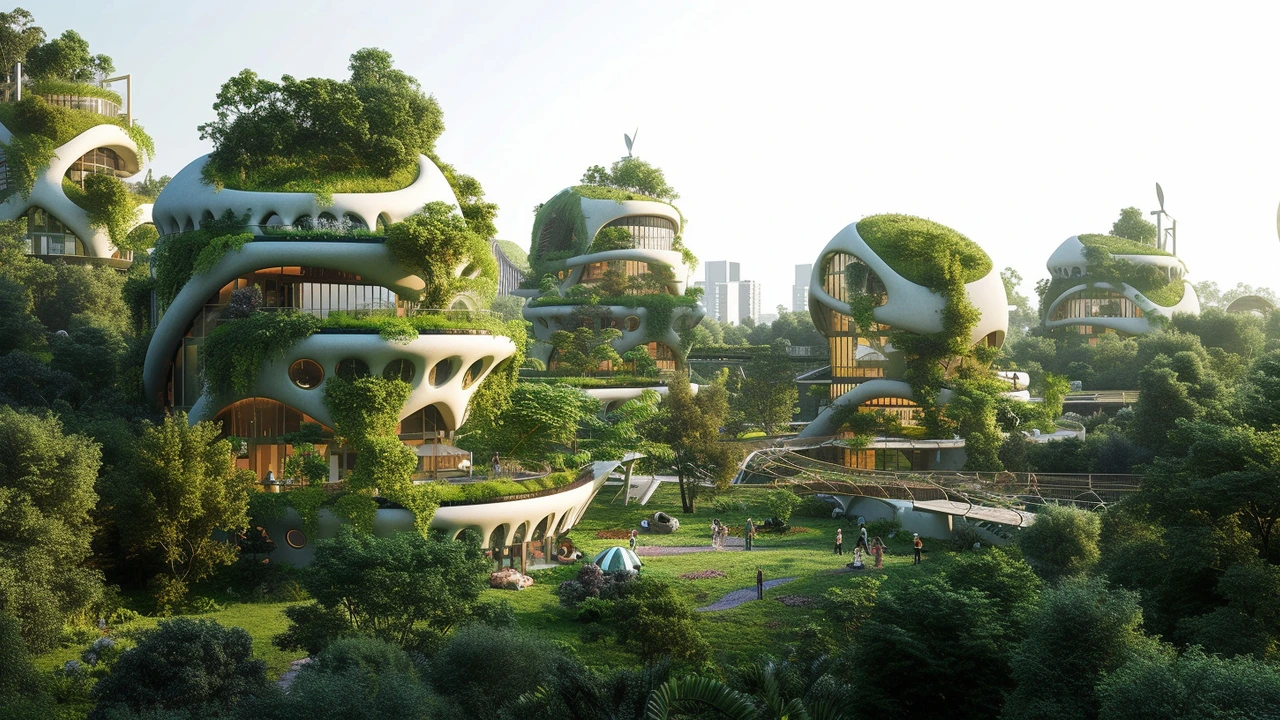As a passionate eco-warrior and architecture enthusiast, I've seen first-hand how sustainable architecture can pave the way for a greener future. This intriguing article will bring you on an enlightening journey exploring the critical role sustainable architecture plays in environmental conservation. We'll dive deep into how innovative, eco-friendly design solutions can combat various environmental challenges, contributing to a greener, healthier future. Get ready to kick-start your green initiative through the amazing world of sustainable architecture.
Green Future: Practical Guide to Sustainable Architecture
Buildings shape our daily life — and they produce about 40% of global energy-related CO2 emissions. That number is shocking but useful: it shows design choices actually move the needle. This short guide gives practical tactics for homeowners, architects, and city planners who want to cut energy, save money, and keep building character.
Design choices that cut energy use
Begin with passive design: orient rooms to the sun, size and place windows for daylight without overheating, and use shading where needed. Good insulation and airtight construction stop heat loss in winter and heat gain in summer; they are often the fastest upgrades to pay back. Use thermal mass like stone or concrete to smooth temperature swings, and avoid too much glass on hot exposures. High-performance windows with low-emissivity coatings and proper seals make a big difference.
Heating and cooling choices matter: heat pumps are efficient, and smart thermostats and zoning stop wasted conditioning. For bigger projects, pair efficient systems with renewables like rooftop solar or building-integrated photovoltaics to cut bills and grid demand. High-tech façades can look dramatic and still perform well when you combine shading, operable vents, and good insulation.
Materials, retrofit and city moves
Choose low-carbon materials: certified timber, recycled steel, and concrete mixes with lower embodied carbon. Reuse and retrofit existing buildings instead of demolishing; keeping a solid structure saves energy and preserves history. You can keep a Georgian or Beaux-Arts facade while upgrading insulation, windows, and systems to modern standards. Old building techniques also help: long-lasting materials and smart passive tricks still apply today.
Across cities, green roofs, street trees, rain gardens, and better transit reduce heat islands and cut transport energy. Neo-futurist planning pushes dense, tech-enabled districts, but simple tactical changes like added bike lanes and pocket parks work now and scale up. Practical moves you can make this week include sealing drafts, swapping to LED lights, servicing HVAC, and installing a programmable thermostat.
Get an energy audit before big work; small fixes often pay back faster than you expect. When planning new buildings, require flexible layouts so spaces can adapt to new uses and avoid early demolition. Track performance after handover—meters, sensors, and simple occupant surveys help find quick wins.
If you’re renovating, focus on the building envelope first—roof, walls, windows—and pick contractors who can test for air leaks and thermal bridges. Consider modular or prefabricated components to reduce waste and speed construction. For landscaping, native plants cut irrigation needs and support local biodiversity. If budget is tight, prioritize actions by cost per ton of carbon reduced: insulation, heat pump swap, LED lighting, and solar are usually top performers. Small neighborhood projects like community solar or tree-planting create bigger local impact.
Green design blends old wisdom and new tech; the goal is healthy spaces, lower bills, and buildings that last. Want real examples and step-by-step articles? Explore our write-ups on high-tech façades, retrofits, and material choices to see how these ideas work in real projects. Start small, measure results, and build up—green future is a series of choices you make every day. Start planning today.

